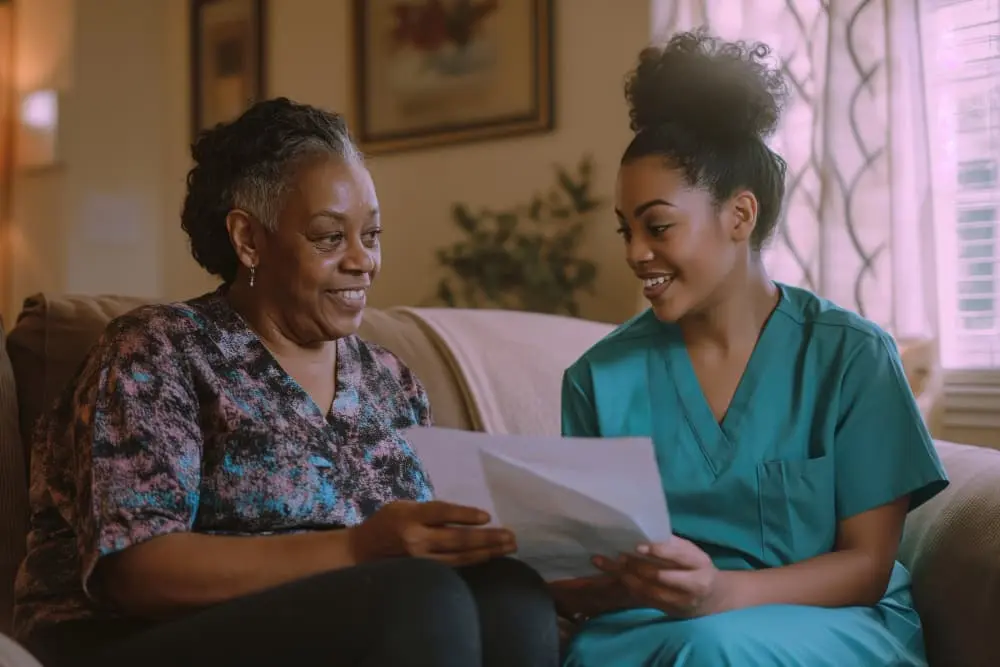Caregiving and Personal: Caring for a loved one at home can be fulfilling, but it’s also challenging. It’s easy to feel overwhelmed when you’re trying to manage your loved one’s needs along with your own personal responsibilities. Finding a balance between the two is important for both your well-being and theirs.
Here are some simple ways to help you manage caregiving and personal life more easily.
Setting Priorities
The first step to balancing caregiving and personal responsibilities is knowing what’s most important. Start by listing your caregiving tasks and personal tasks. Identify which ones need your immediate attention and which ones can wait.
For instance, helping your loved one with medication and doctor’s appointments is a top priority. Meanwhile, some household chores can be done later or shared with others. Setting priorities can help you organize your time and energy.
Asking for Help
Don’t be afraid to ask for help. Many caregivers try to do everything themselves, but it’s okay to share the responsibilities.
Family members, friends, or professional caregivers can assist you, even with small tasks. For example, a family member could help with errands or sit with your loved one while you take a break.
At A Life Home Health Care, we offer professional caregivers who can step in when you need a break. Whether it’s just for a few hours or a full day, having help can make a big difference.
Setting Boundaries
It’s important to set boundaries. You need time for yourself to rest and recharge. Let your loved one and family know when you’re unavailable.
For example, if you need an hour to yourself, make sure everyone understands that this is your time to relax or do something you enjoy.
Taking regular breaks is not a luxury—it’s a necessity to avoid burnout.
Practicing Self-Care
Taking care of yourself is just as important as caring for your loved one. If you’re not in good health, you won’t be able to provide the best care. Try to eat healthy, get enough sleep, and exercise when you can.
Even simple things like taking a walk, reading a book, or listening to music can help you feel more relaxed. Self-care doesn’t have to be big—it’s the little things that matter.
Balancing Work and Caregiving
If you’re working while caregiving, it’s normal to feel like you’re being pulled in two directions. Many workplaces now offer flexible schedules or remote work options, so it’s worth asking your employer about these.
Also, don’t forget about the Family and Medical Leave Act (FMLA). It allows you to take time off for caregiving without risking your job. Talk to your HR department about your options.
Signs of Caregiver Burnout
Caregiving and Personal: burnout happens when you’re mentally, physically, and emotionally drained. If you’re feeling tired all the time, irritable, or disconnected, you might be experiencing burnout.
To avoid burnout, take breaks, share the responsibilities, and connect with others. Joining a support group for caregivers can also be helpful. It’s important to take care of yourself so you can continue caring for your loved one.
Long-Term Balance
Balancing Caregiving and Personal life is an ongoing process. As your loved one’s needs change, so will your responsibilities. It’s important to stay flexible and adjust your routine as needed.
Remember, A Life Home Health Care is here to support you. Whether you need professional caregiving help or advice, we are always here to assist you.
Conclusion
Balancing Caregiving and Personal responsibilities can be challenging, but it’s possible. By setting priorities, asking for help, setting boundaries, and practicing self-care, you can manage both without burning out.
Remember, you don’t have to do it all alone—reach out for support when you need it.
Looking for help balancing caregiving and personal responsibilities? Contact A Life Home Health Care today for the support you need.












